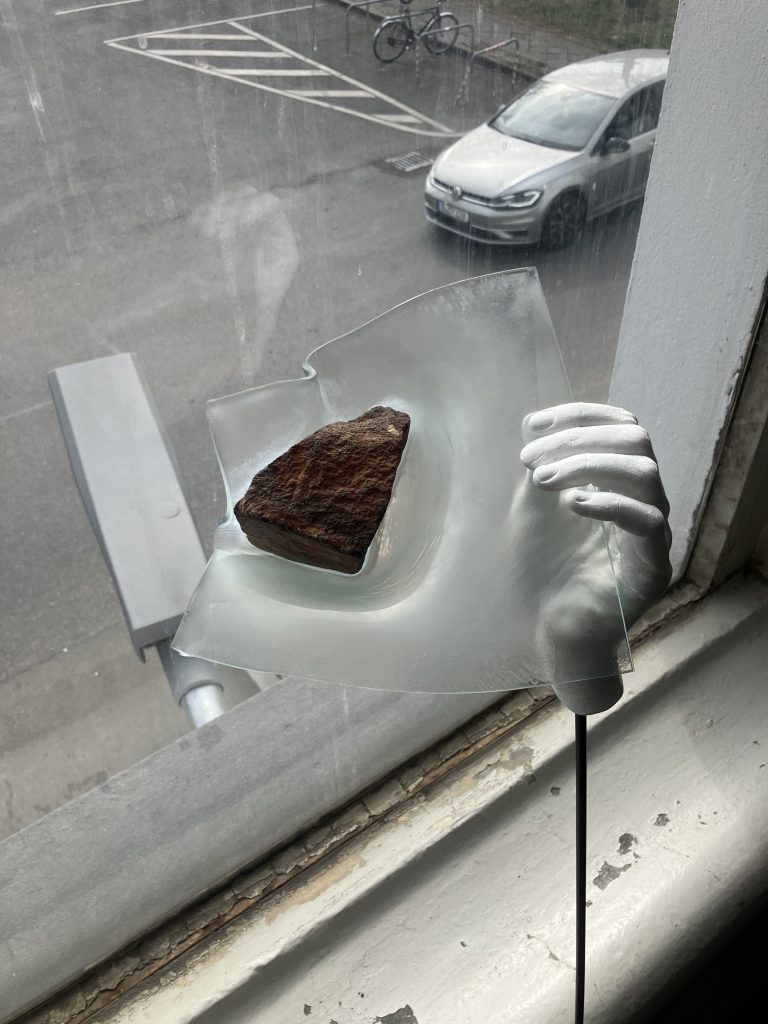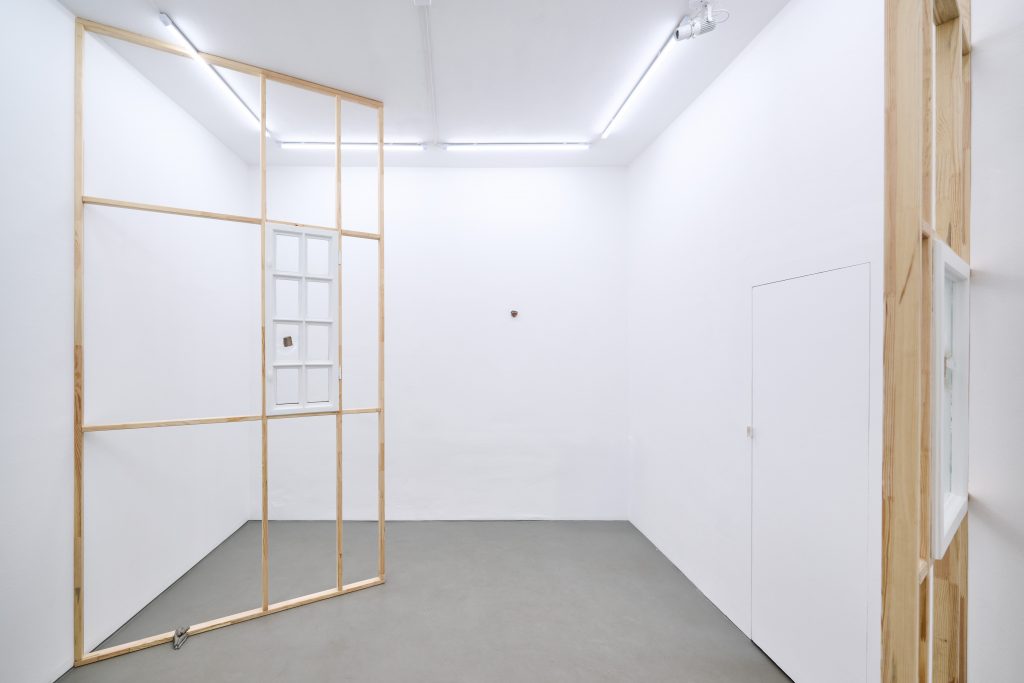
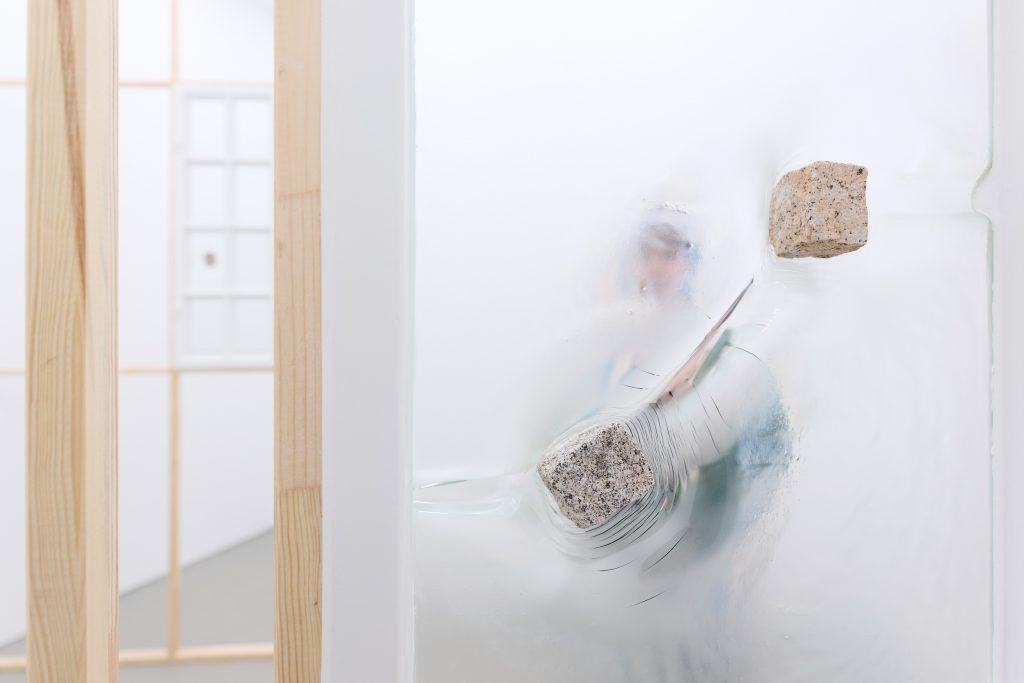
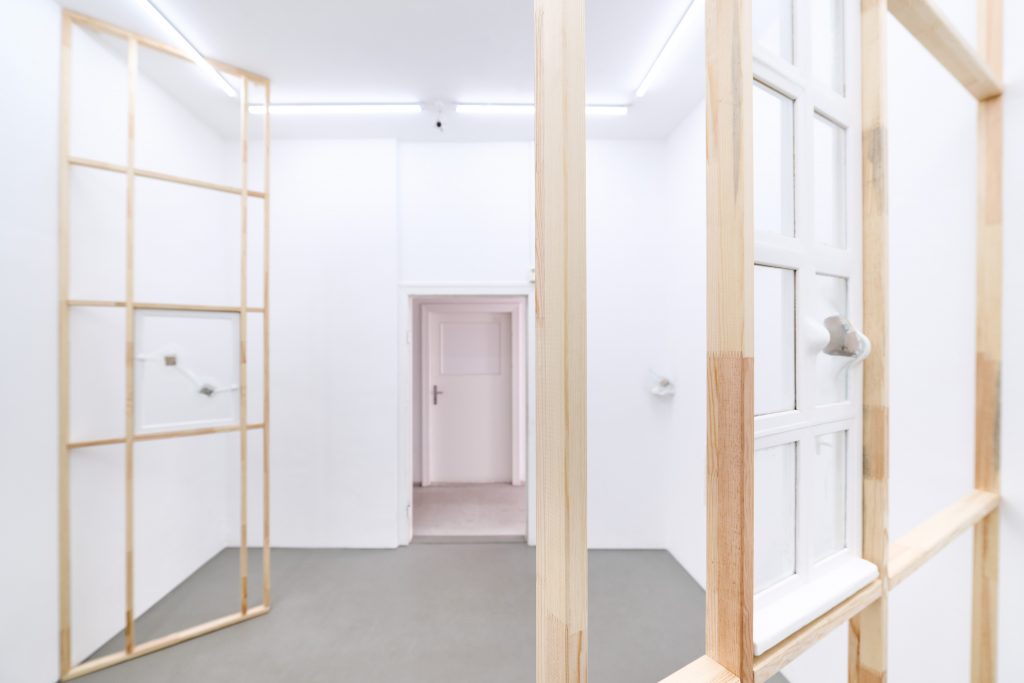
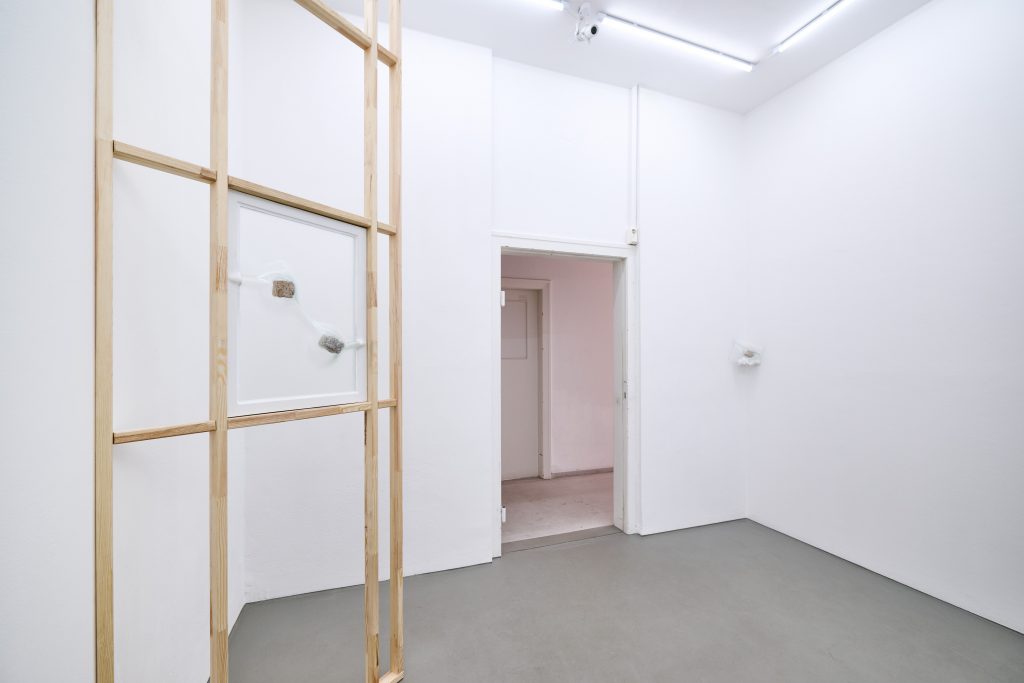
There’s that lovely old saying: people who live in glass houses shouldn’t throw stones. But why shouldn’t they, really? Is it because that’s not the job of the people who live inside, but rather out- side? Or because the glass was really expensive and Dad might get angry? Or perhaps because they might realize that there is a reality behind the glass—one they can not only see, but actually enter? Because they might discover that they have been living in a prison all along? – Thinking about the meaning of an old saying is much like the effect Sümer Sayın creates with her work: just a moment ago, everything seemed perfectly clear, but now that I look more closely, it starts feeling strange.
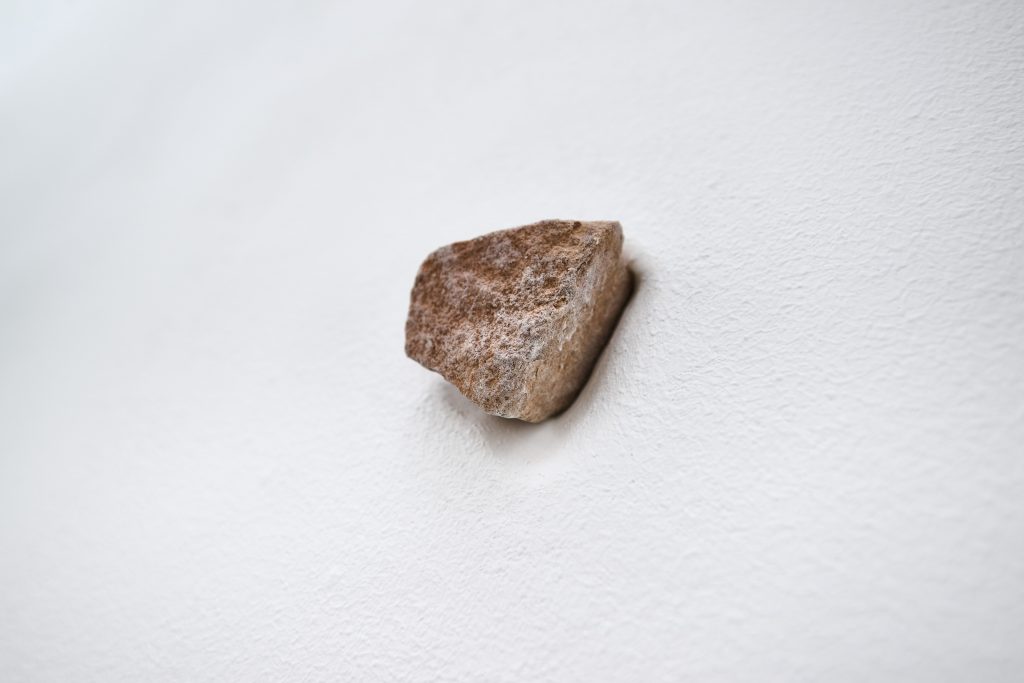
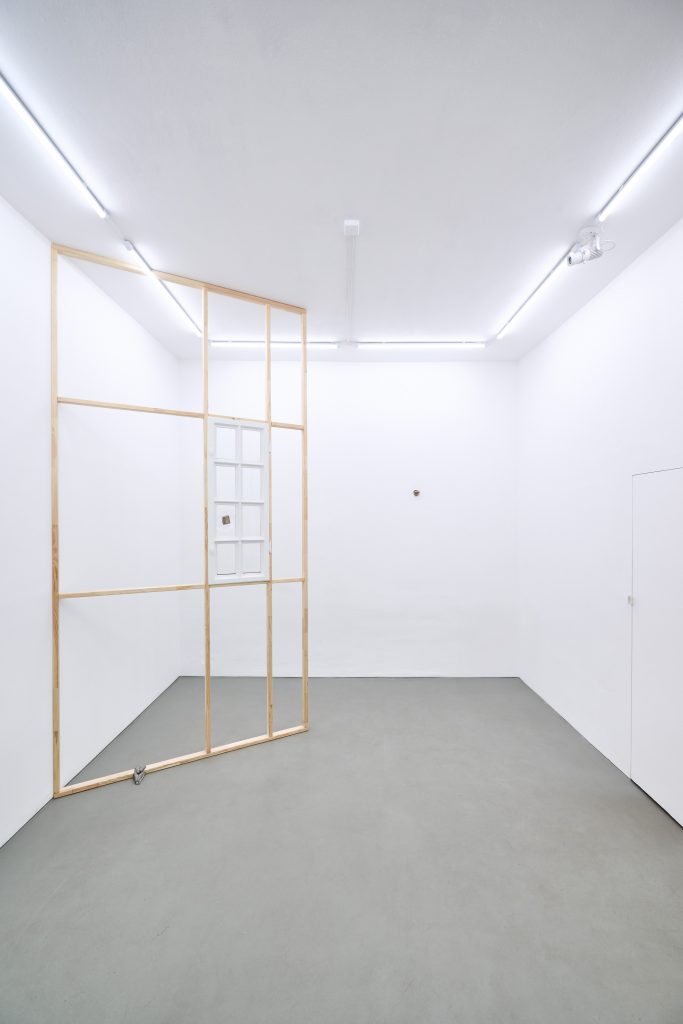
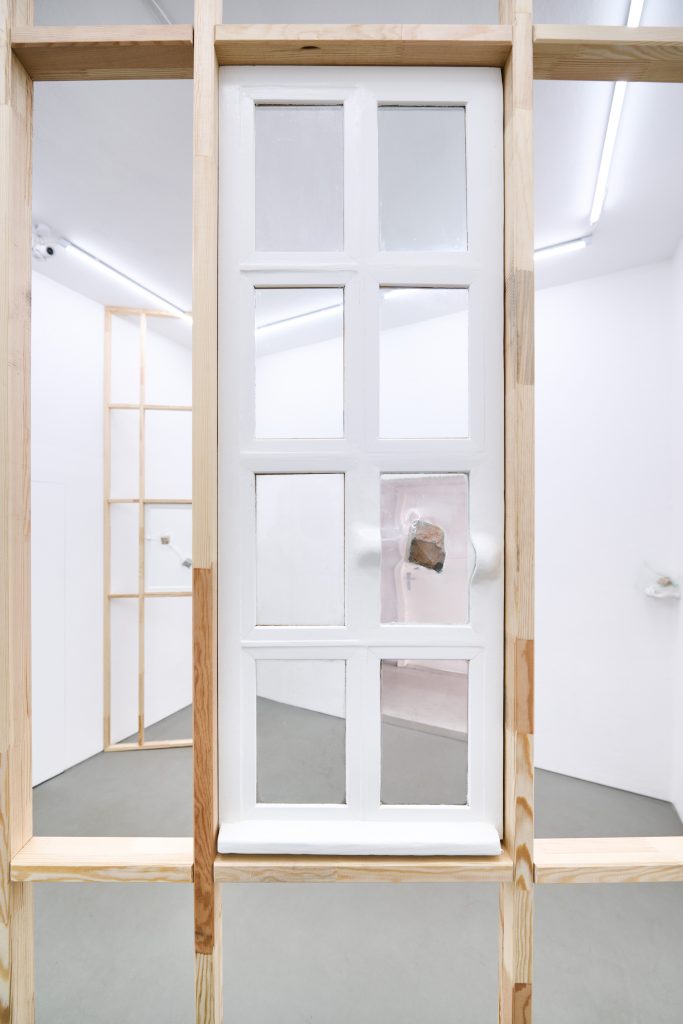
So, what do we see in this exhibition? Windows, for sure, and stones, and hands that may have picked them up from the street. And glass, of course. But what kind of glass? What kind of glass doesn’t shatter into a thousand pieces when struck by a stone, but instead bends on impact, em- bracing the stone like a protecting hand—as if it seeks to soothe the violence, to help it overcome its anger through affection, or even love?
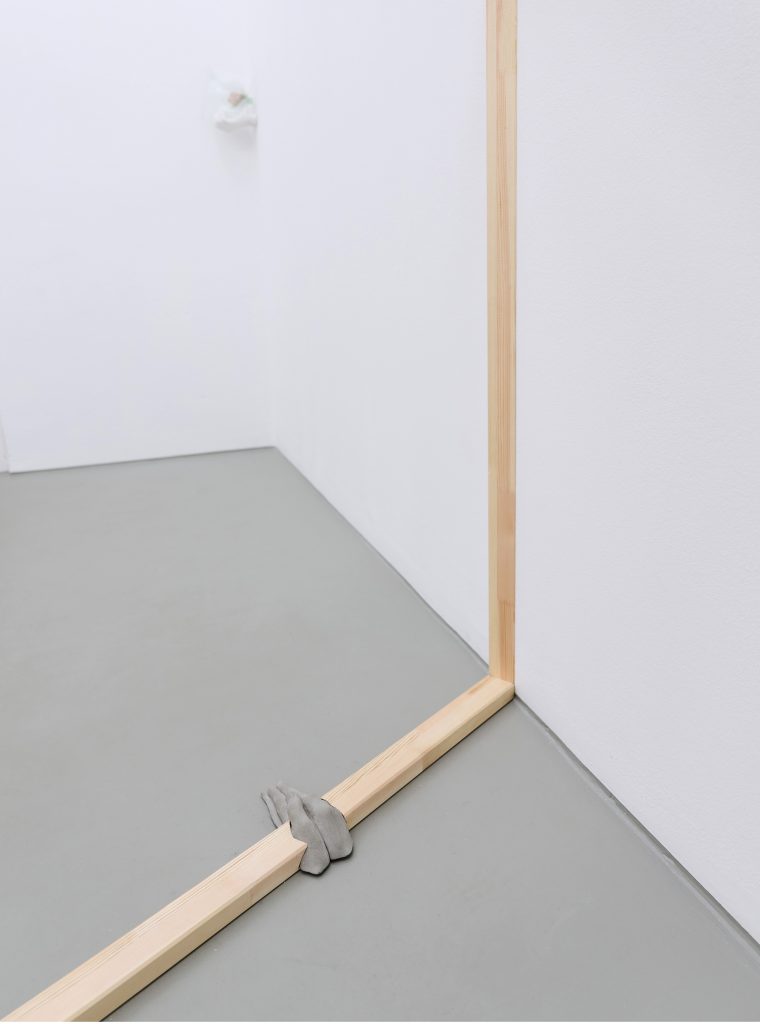
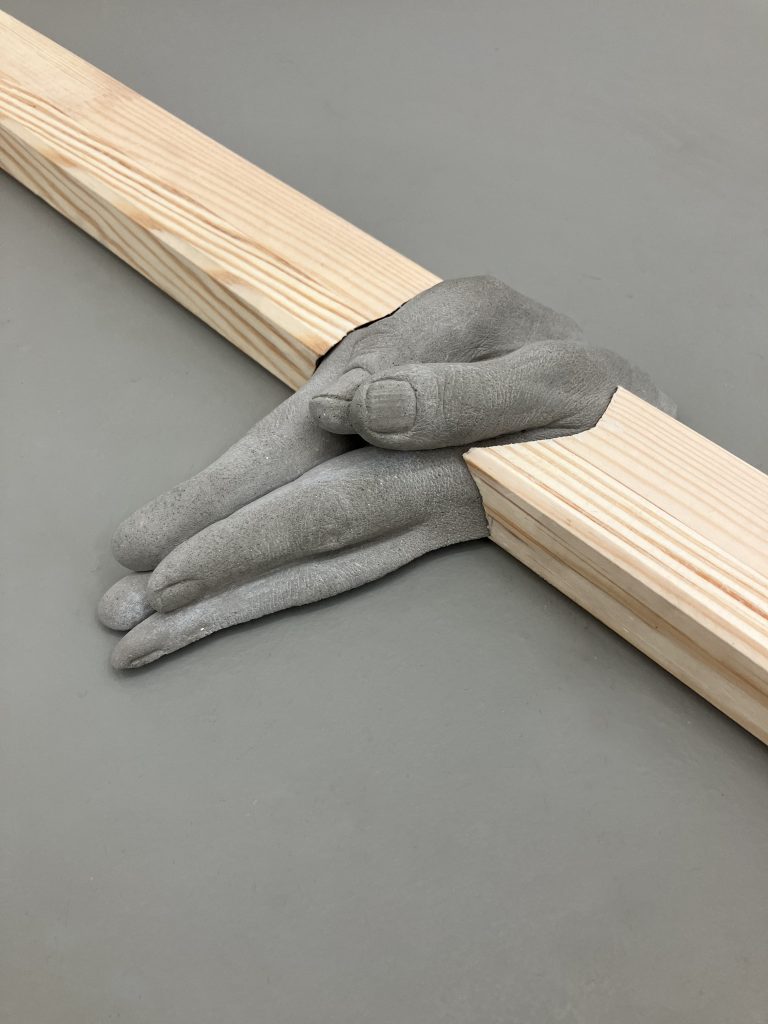
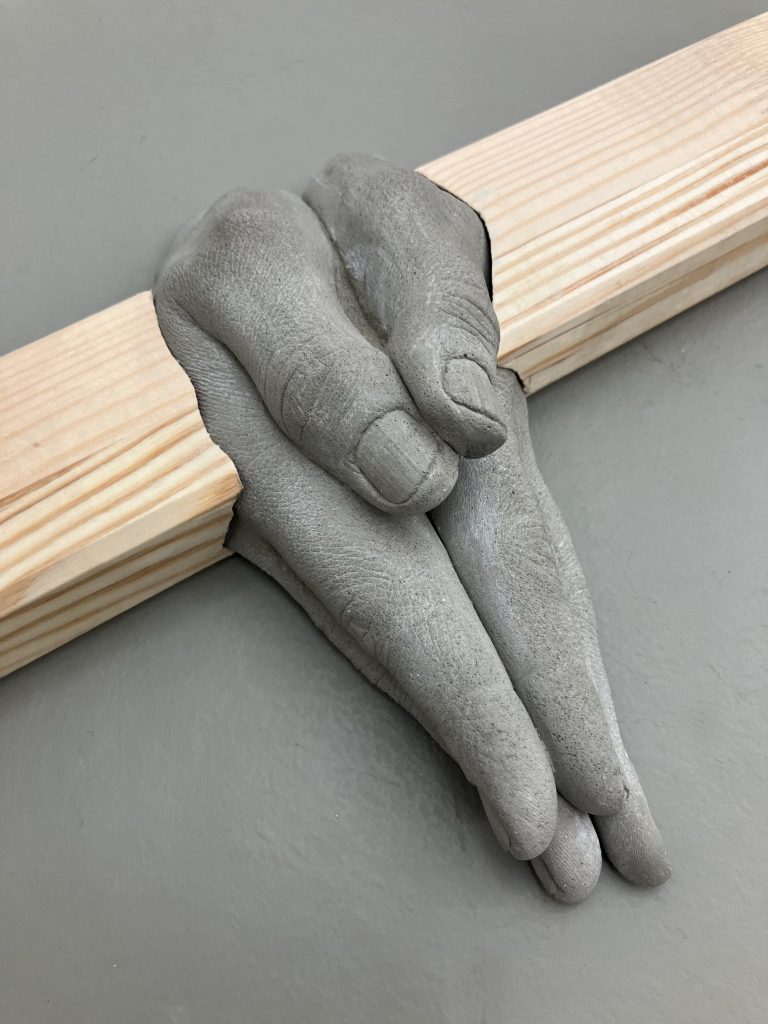
Sayın captures a moment here. And in that act alone—like in every captured moment (think of photography!)—there lies a small utopia: to stop time, to rescue something from the eternal van- ishing of things. Yet in Sayın’s work, this utopia takes on a bigger and more radical dimension. It’s not merely about pausing; it’s about stopping: destruction becomes affection, rejection becomes acceptance, sharp pieces of glass become a floating form. You could argue this is impossible. A stone thrown to shatter something into a thousand pieces must fulfill its destiny. But then again: Don’t you trust your own eyes? Don’t you see another reality unfolding right before you?
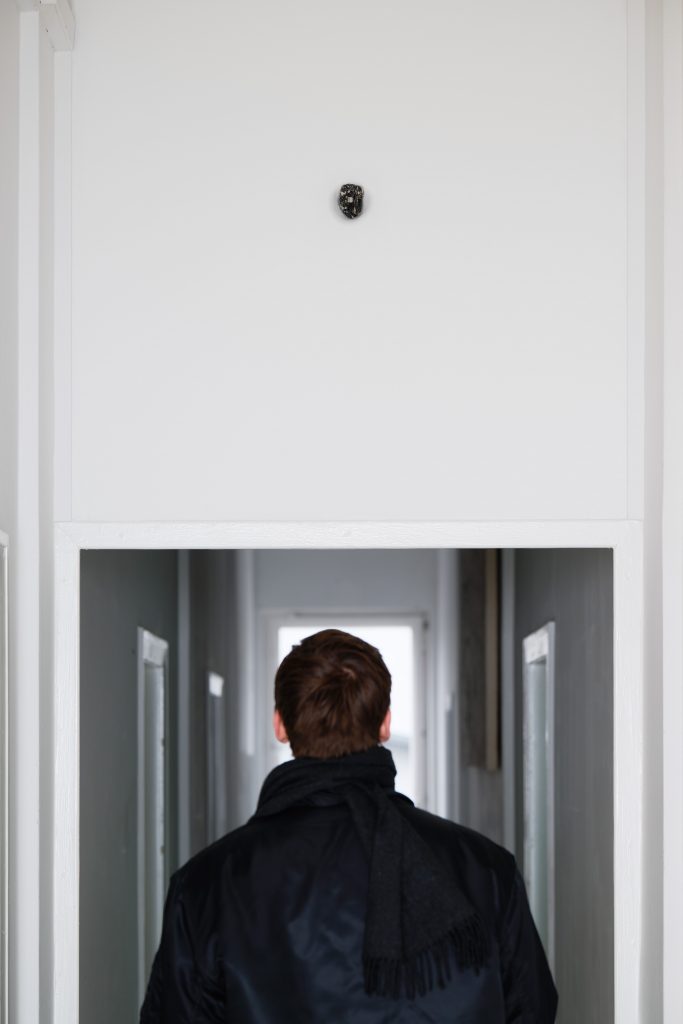
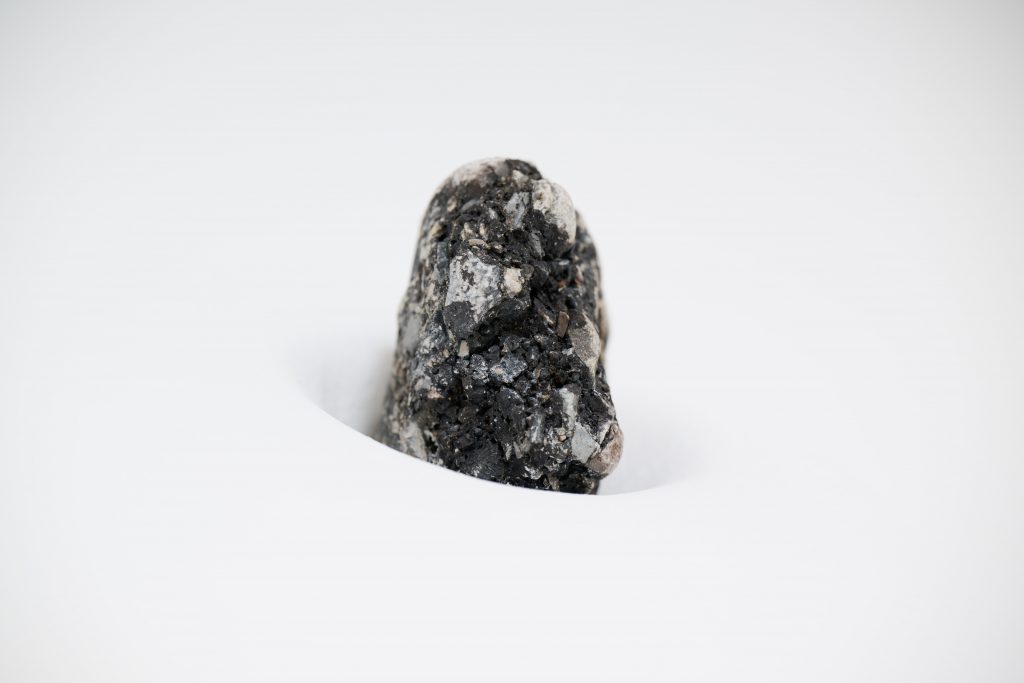
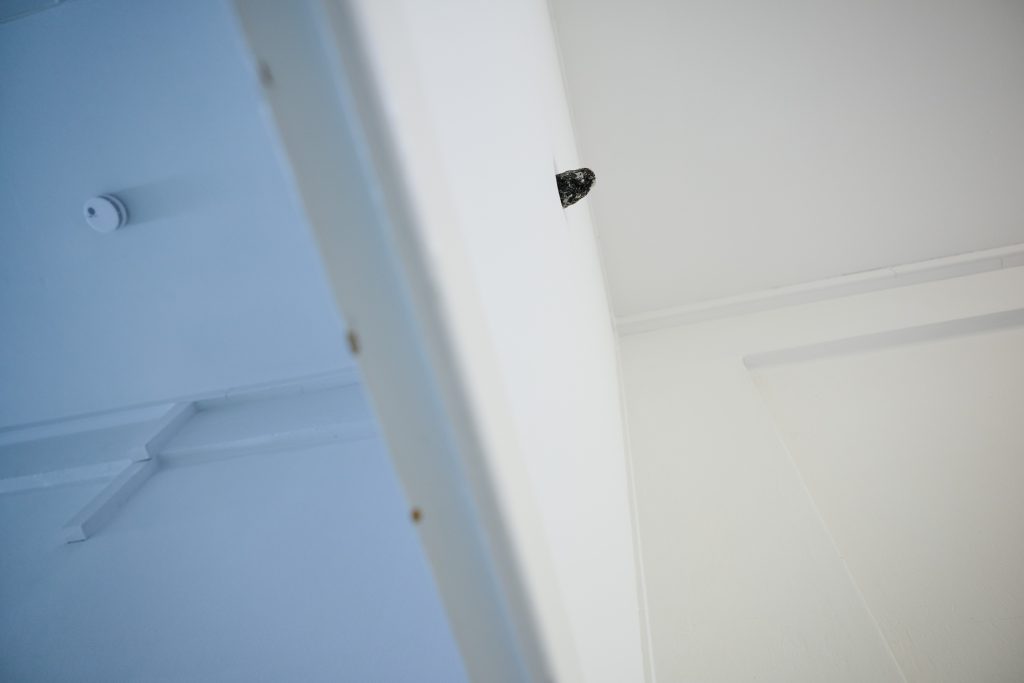
This also means, of course, that Sayın’s utopia has nothing to do with the kitsch of fantasizing about world harmony. As long as there are human beings, there will be friction, clashes, conflicts. In other words, stones will be thrown—in Sayın’s case, quite a lot of them. But that doesn’t mean we must surrender to the endless cycle of destruction and reconstruction. As Sayın demon- strates, we can bend the very air through which we’ve just threw curses at one another. We can break (and even share?) the time we’ve stolen from each other. And if you’re not ready to believe it, maybe it’s time to expand your imagination. Maybe this is your glass house. Maybe you should start throwing some stones.
text: Clemens Espenlaub
photos: Nils Bornemann, Friedrich Herz
